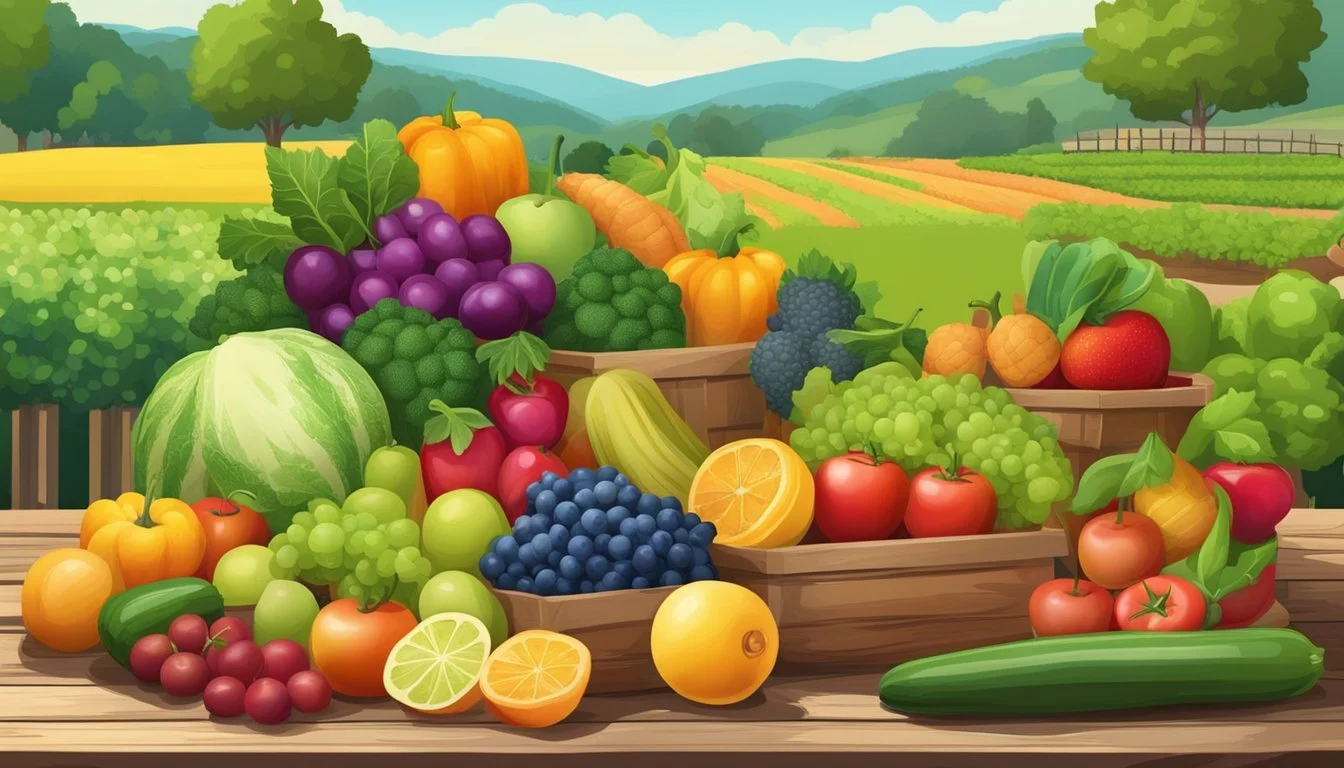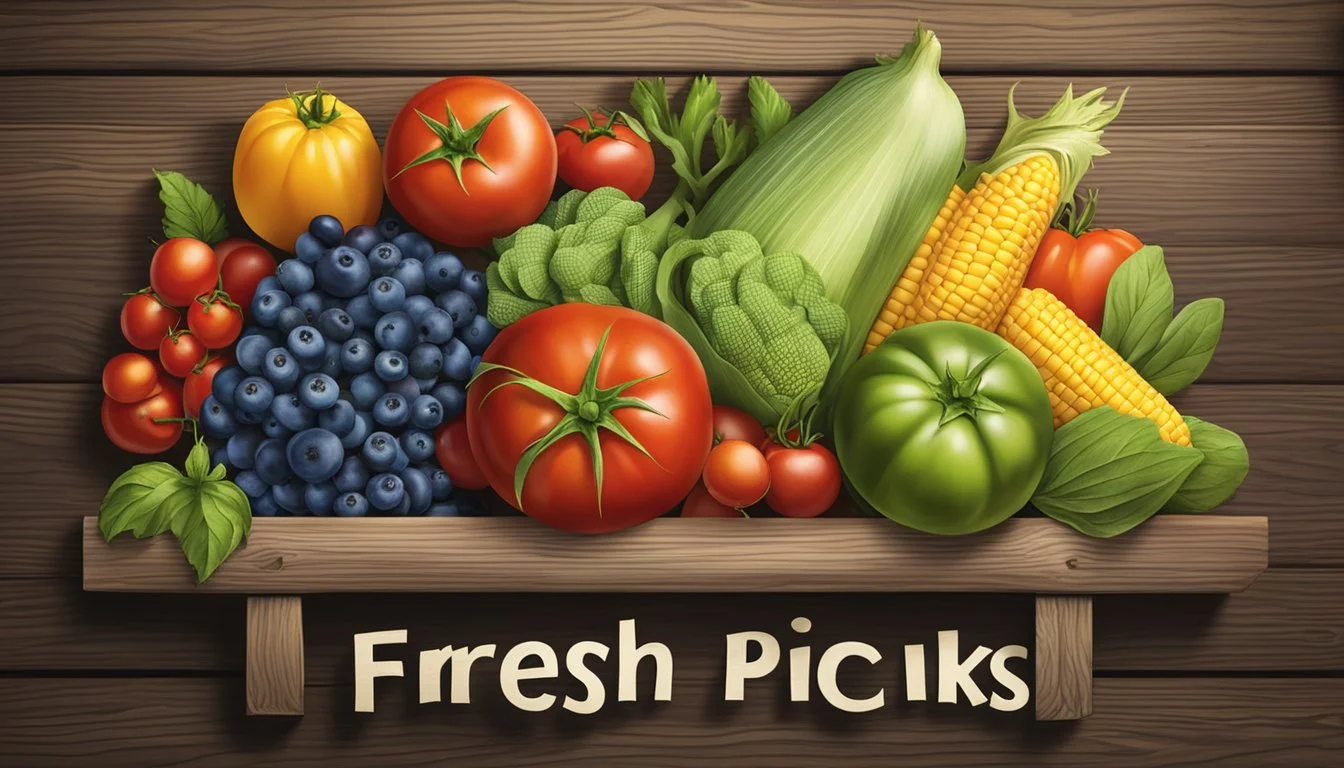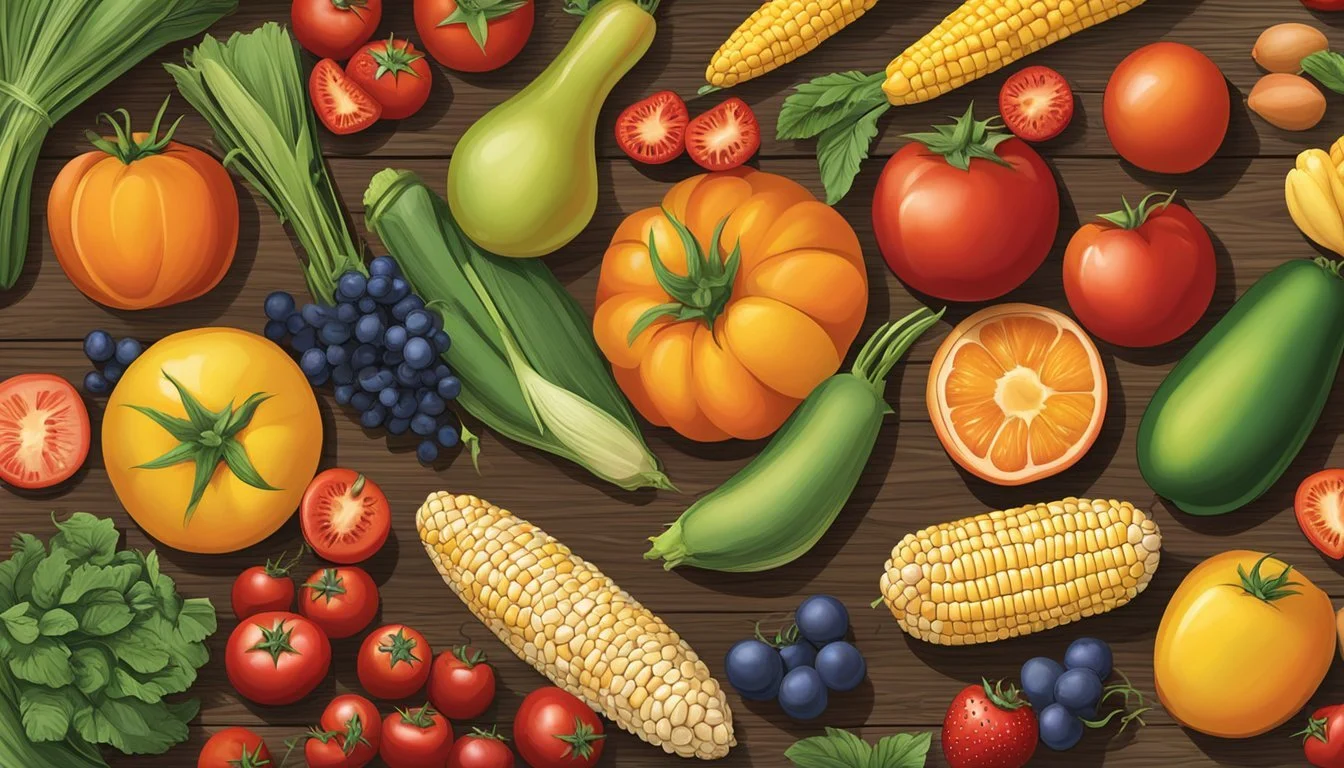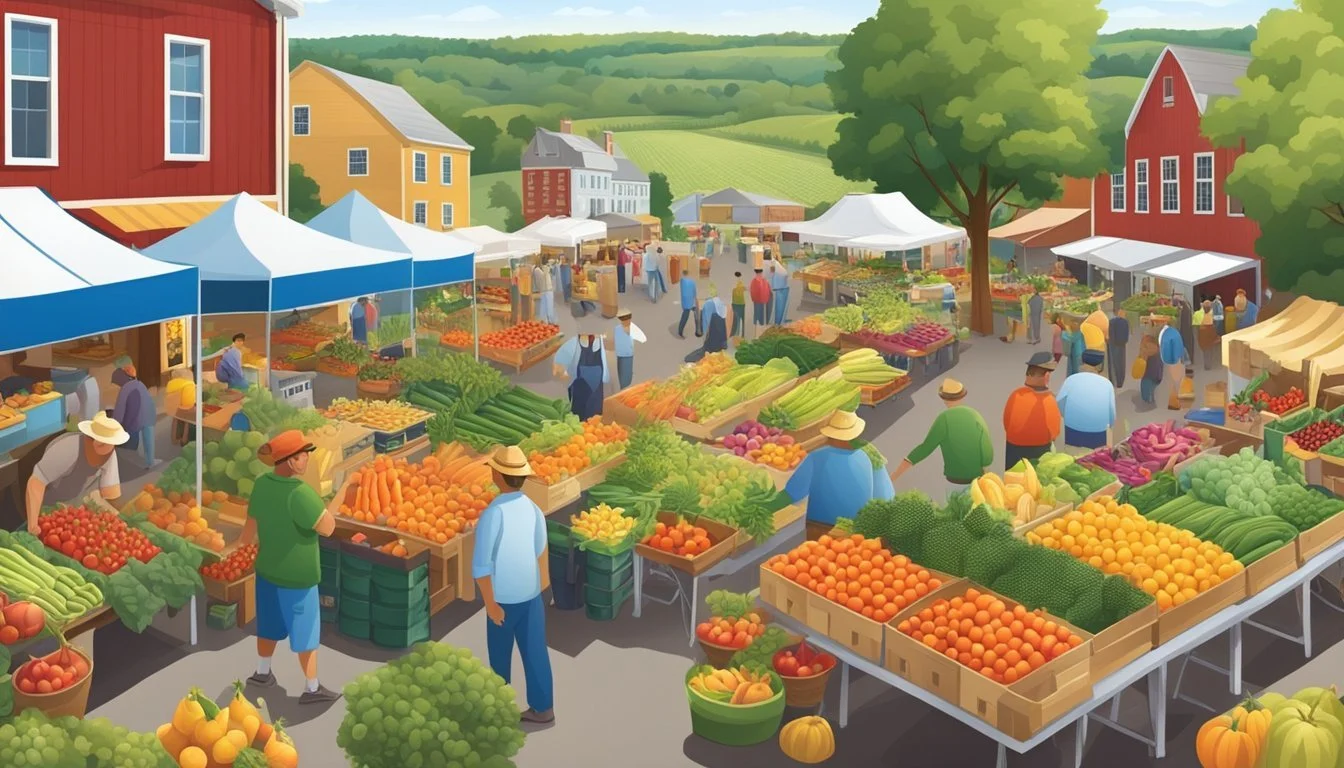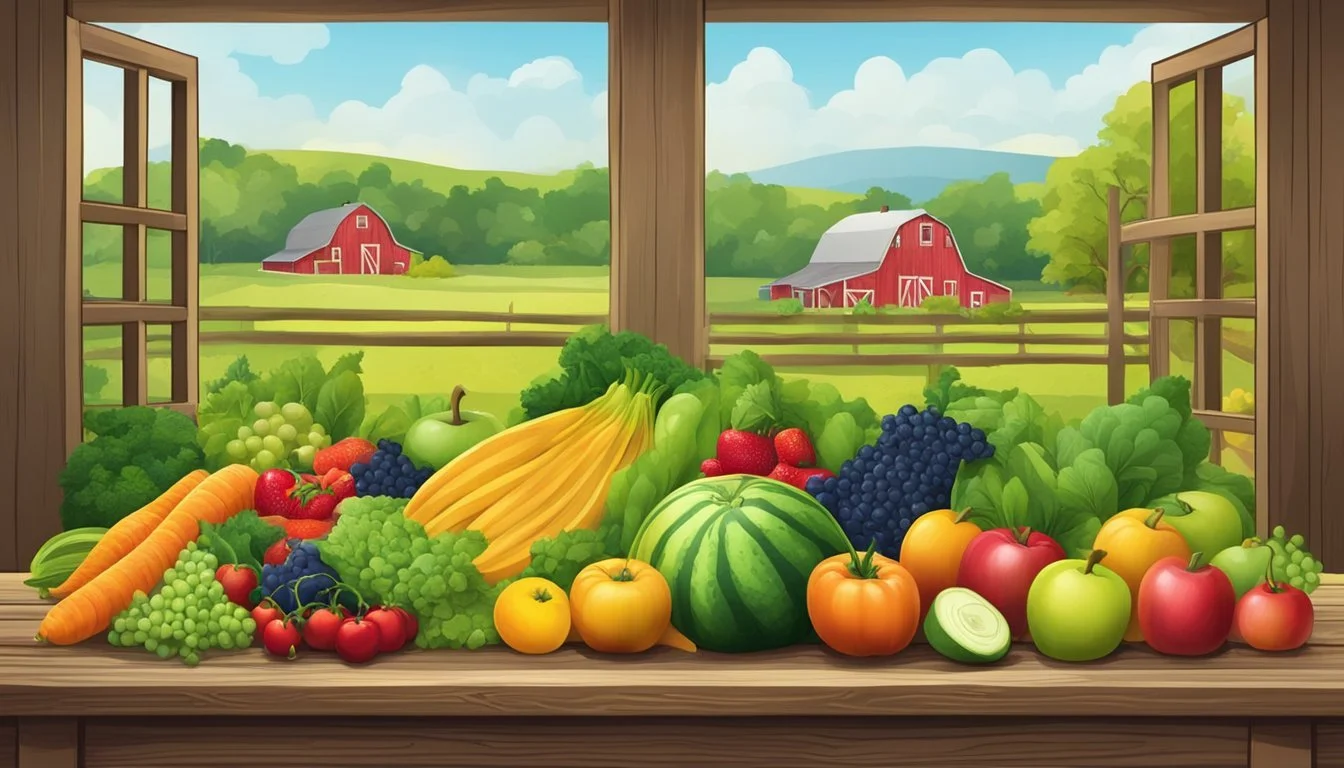New Jersey Seasonal Fruit & Veg Guide
Your Ultimate Shopper's Companion
Embracing the bountiful harvests of New Jersey, seasonal produce forms the cornerstone of the farm-to-table movement that is flourishing across the state. With a rich tapestry of fertile soil and favorable growing conditions, New Jersey farmers deliver a plethora of fruits and vegetables that embody the essence of fresh, local, and sustainable eating. The state's agricultural offerings range from the famed Jersey tomatoes and sweet corn to a wide assortment of leafy greens, peppers, and root vegetables, each arriving in their prime season.
The rhythm of the seasons dictates the availability of New Jersey's produce, and this temporal diversity ensures that farm-to-table enthusiasts can continually enjoy a changing menu of fresh options. Summer months burst with juicy blueberries (how long do blueberries last?) and ripe peaches, while autumn ushers in a variety of squash and crisp apples (how long do apples last?). By syncing with the natural cycle of growth, consumers can partake in a gastronomic journey that not only heightens the culinary experience but also supports local farming communities and the environment.
With farm-to-table, the connection between the land and the dinner table becomes intimate and tangible. It encourages a deeper appreciation for the natural progression from seed to plate, promoting a food system that is transparent, ethical, and centered around community. For New Jersey residents and chefs alike, this movement isn't just a trend—it’s a commitment to a healthier, more sustainable way of living and eating.
What’s in Season in New Jersey Right Now?
Seasonal Overview
New Jersey’s diverse climate allows for a wide range of fruits and vegetables to flourish throughout the year. Each season brings its own array of fresh produce, making the state a haven for farm-to-table enthusiasts who eagerly anticipate the next crop cycle.
Spring in New Jersey
Springtime ushers in a refreshing start with asparagus and peas taking center stage. An abundance of herbs and tender lettuce varieties begin to appear in markets, as the ground thaws and warms.
Asparagus: Available from April.
Peas: Peaks around May.
Herbs & Lettuce: Various types emerge in early spring.
Summer Bounty
New Jersey's summers are renowned for their vibrant produce. This is the prime time for berries, including strawberries and blueberries, followed by ripe tomatoes, sweet corn, juicy peaches, and a selection of melons.
Berries: Strawberries in June, blueberries from June to August.
Tomatoes & Sweet Corn: Hit their stride in July and August.
Peaches & Melons: Best from July through September.
Autumn Harvest
As the air cools, fall delivers a hearty selection including pumpkins, apples, a variety of squash, and tart cranberries, a New Jersey staple.
Pumpkins: Typically ready in September and October.
Apples: Harvest begins in late summer and extends into fall.
Squash: Comes into season in early fall.
Cranberries: Harvested in late fall, around October.
Winter Selections
Even in the colder months, New Jersey offers winter squash, turnips, kale, and an array of root vegetables that can withstand the chilly weather, providing fresh options year-round.
Winter Squash: Available through the winter.
Turnips & Root Vegetables: Peak in the late fall and winter.
Kale: Can survive the winter months and is often sweeter after a frost.
Monthly Fresh Picks
New Jersey's seasonal produce offers a diverse array of fruits and vegetables throughout the year. Each period has its signature crops that are at their peak, ensuring the freshest options for farm-to-table dining.
January to March
In the colder months, storage crops and citrus rule the markets. January sees a variety of citrus like oranges at their freshest, while storage crops like squashes and potatoes are also widely available. By February, the selection remains similar, with hearty root vegetables filling the bins.
April to June
As spring arrives, the selection starts to diversify. Strawberries make their sweet entrance in June, signaling the start of summer fruit season. The end of June also ushers in the early harvest of cherries.
July to September
Summer's bounty is rich with variety. Blueberries and peaches are specially sought after in July and August. Going towards September, the harvest expands to include a wider variety of vegetables, including crisp sweet corn and flavorful tomatoes.
October to December
Fall's harvest brings its own specialties, as apples reach peak ripeness in October. November welcomes the versatility of pumpkins, rounding out autumn's offerings. As the year ends, December focuses again on storage crops, with many varieties of apples still widely available.
Choosing the Right Produce
Selecting fresh produce at its peak ripeness ensures the best quality and flavor. Knowledge of storage and the distinctions between organic and conventional farming can guide consumers in making informed choices at the market.
Understanding Ripeness
Subtle cues can help one determine if fruits and vegetables are ripe. Color, firmness, and aroma are key indicators. For instance, ripe tomatoes often have a deep, even color and yield slightly to a gentle squeeze, while sweet corn is best when the kernels are plump and the husk is bright green.
Fruit Ripeness: Local farmers can often provide insights on picking ideal ripe fruits from their garden or market stand.
Vegetable Readiness: Leafy greens should be vibrant and crisp without any wilting to indicate their freshness.
Storage and Shelf-life
Proper storage extends the shelf-life of produce while preserving its quality. Refrigeration is essential for some items, while others are best kept at room temperature.
Cold Storage: Vegetables like broccoli and spinach benefit from refrigeration, which slows down the decay process.
Room Temperature: Tomatoes and peaches continue to ripen and can lose flavor if refrigerated.
Be sure to ask local farmers about the best way to store their product to maximize freshness.
Organic vs Conventional
The choice between organic and conventional produce depends on one's preferences regarding farming practices and chemical use. Organic farming typically avoids synthetic pesticides and fertilizers.
Organic Produce: Look for certification to ensure produce meets organic standards.
Conventional Produce: Might be less expensive and more accessible while still providing quality and flavor.
It is often through direct conversation with local farmers that one can learn about the specific practices used to grow their produce.
Farm Activities
New Jersey offers a plethora of farm activities that are both engaging and enlightening. Visitors can connect with local farmers, enjoy the freshest produce right at the source, and participate in hands-on agricultural experiences.
Farmers' Markets
Farmers' markets are a staple in New Jersey, where one can find an array of seasonal produce. They operate across various locations throughout the state, providing a platform for local farmers to sell their fresh produce directly to consumers. These markets are not just a place to buy food; they're a community gathering that celebrates local agriculture and seasonal specialties.
Key dates: Typically open from spring through fall
Notable produce: Berries, cherries, apples, corn, and much more depending on the season
Pick-Your-Own Farms
Pick-your-own farms in New Jersey invite visitors to have a hands-on farming experience. Picking dates vary with seasonal produce, ensuring visitors get the freshest fruits and vegetables.
Berries: Available for picking in the summer months, with blueberries from June to August
Apples: A popular fall activity, apple picking season runs from August through November
Pumpkins: Often available from mid-September to mid-November, perfect for autumn festivities
Alstede Farms is an example of a pick-your-own destination where one can harvest their selection of fresh, ripe produce straight from the plant. These farms often offer additional activities such as corn mazes and farm-to-table meals, enhancing the farm experience and providing fun for the entire family.
Sourcing and Sustainability
In New Jersey, sourcing fresh, quality produce is synonymous with supporting local farms and sustainability. These practices ensure that agriculture thrives while nurturing the environment.
Local Farms and Agriculture
New Jersey farms represent a bastion of quality in agriculture, offering a variety of fruits and vegetables. These local sources take pride in employing sustainable farming practices. One can locate nearby community-supported agriculture (CSA) programs or visit farmers' markets to directly source seasonal produce. Doing so promotes local farms, ensuring they remain integral to New Jersey's agricultural framework.
Supporting Farm to Table
The farm-to-table movement emphasizes direct sourcing from farms to provide the freshest fare on restaurant tables. This allows consumers to experience the true taste of seasonal products, with many New Jersey establishments pledging support to local agriculture. By prioritizing farm-to-table sourcing, businesses contribute to more robust community-supported agriculture.
Environmental Impact
Sustainable practices have a significant positive impact on the environment. New Jersey farms are increasingly adopting methods that reduce ecological footprints, such as minimizing water usage and limiting pesticides. This dedication not only improves the quality of produce but also sustains the health of the land. Purchasing from these sources encourages continued stewardship of the land.
By focusing on these areas, New Jersey's commitment to sourcing and sustainability stands out, showing that local farms and quality produce are at the heart of the state's food culture.
Using Seasonal Produce
Seasonal produce offers the freshest ingredients for cooking and preserving, providing the best flavors and nutritional value. It is important to consider the seasonality of fruits and vegetables to enhance meals and utilize preservation techniques effectively.
Cooking and Recipes
When cooking with seasonal produce, chefs and home cooks can take full advantage of the flavors and varieties available. In New Jersey, for example, they have access to a wide range of garden-fresh produce, tailoring recipes to what is currently in harvest. Here's a brief guide for some seasonal staples:
Spring: Tender leafy greens such as spinach and herbs like parsley and cilantro.
Summer: Iconic Jersey tomatoes and sweet corn, as well as blueberries and peaches.
Fall: A variety of squash and pumpkins, perfect for hearty soups and stews.
Winter: Root vegetables and cabbages that can be used in warming dishes.
He or she should consider pairing these fruits and vegetables with herbs grown during the same season to maximize the flavor profile of their meals.
Preservation Techniques
Preserving seasonal produce allows individuals to enjoy the flavors year-round. The main methods include canning, freezing, and drying:
Canning: Suitable for a wide range of produce including tomatoes and berries. It involves sealing them in sterilized jars to extend shelf life.
Freezing: Best for corn, peas, and berries, freezing retains nutrients and taste.
Drying: Herbs and some fruits like apples are ideal for drying, which concentrates their flavors and allows for easy storage.
Each technique ensures that the essence of the garden's yield can be captured and used long after its peak season. These methods also offer a chance for creativity, giving one the opportunity to craft unique varieties of each produce item preserved.
Educational Resources
New Jersey offers a variety of educational resources geared towards fostering a deeper understanding of the farm-to-table movement and seasonal produce availability. These resources include hands-on workshops and detailed guides, providing valuable information for consumers, educators, and farmers alike.
Workshops and Classes
New Jersey's Department of Agriculture provides Farm to School programs that offer workshops and classes. These educational experiences are designed to connect individuals with local farmers, emphasize the importance of fresh produce, and teach about the benefits of incorporating seasonal fruits and vegetables into school meals. Participants can learn about the process from farming to consumption, and gain insights into making healthier food choices at the local level.
Availability: Interested parties can find upcoming workshops and registration details on the New Jersey Department of Agriculture's official website.
Seasonal Guides and Calendars
To assist in understanding and promoting seasonal produce, New Jersey’s Quick Steps to Fruits & Vegetables Toolkit is available online. This toolkit includes a crop harvest calendar that provides picking dates for a variety of fruits and vegetables, ensuring that individuals know when to find the freshest local produce at farmers’ markets.
Highlighted Crops:
Corn: June through August
Tomatoes: July through October
Blueberries: June through August
Cranberries: October through December
Educators can integrate these calendars into their curriculum to teach students about the seasonality of food and its environmental and nutritional benefits.
Challenges and Considerations
In New Jersey, the path from farm to table for fruits and vegetables is influenced by a complex interplay of environmental and economic factors. These challenges directly impact agriculture, particularly in how local farmers plan and adapt to the varying demands of each season.
Weather and Climate
The weather and climate significantly affect New Jersey's agricultural yields. Seasonal weather patterns can vary, with the northern and southern parts of the state experiencing distinct differences that influence when and what crops are in season. For instance, a warmer winter may lead to an earlier harvest, while an unexpected frost could damage crops.
Spring: Risk of late frosts; early vegetable planting starts
Summer: Typically hot and humid; ideal for tomatoes and sweet corn
Fall: Cooler temperatures; harvest for apples and pumpkins
Winter: Limited outdoor growth; reliance on greenhouses
The occurrence of unpredictable events such as storms or droughts further complicates the seasonality and availability of certain produce. Local farmers must continuously monitor forecasts and be prepared to combat disease and pest infestations, which can be exacerbated by changing weather conditions.
Economic Factors
The economic landscape also presents various challenges to New Jersey's farm-to-table cycle. Local farmers must navigate the delicate balance between cost, supply, and demand. They have to make strategic decisions on what to plant and how much to plant to ensure profitability while minimizing waste.
Costs: Inputs like seeds, labor, and transportation
Supply and Demand: Fluctuations can lead to market saturation or shortages
Local farmers often bear the financial burden of investing in sustainable practices to meet consumer preferences and regulatory requirements. This might include funding for specialty crop grants or implementing advanced technology to improve crop resilience and yield. However, these costs could pay off by allowing these farmers to tap into niche markets that value locally-sourced, seasonal produce.
Conclusion and Future Trends
The farm-to-table movement in New Jersey is part of a broader trend that emphasizes local, seasonal food. It supports sustainability by reducing food miles and strengthens the local economy. New Jersey's agriculture is known for its diverse range of produce, and as consumers become more health-conscious, demand for fresh and local fruits and vegetables is expected to grow.
Innovation is at the heart of the industry's future. Farmers and food producers are exploring new technology to extend growing seasons and improve crop yields. Techniques like hydroponics and vertical farming could allow for year-round production of certain crops, impacting the traditional seasonality.
Trends in consumer preferences also point towards organic produce and heirloom varieties, with New Jersey poised to capitalize on these markets due to its strong agricultural base. Restaurants and consumers alike are fostering relationships with local farms, ensuring that fresh, seasonal foods continue to be a staple in New Jersey.
Here are some future trends to watch in New Jersey's farm-to-table scene:
Sustainable Practices: Continued investments in sustainable farming will likely increase, benefiting the environment and potentially leading to organic certification for more farms.
Technology Integration: The use of drones for field monitoring and precision agriculture techniques can enhance crop management and efficiency.
Year-Round Availability: Advancements in growing environments and methods could make it possible for consumers to enjoy certain local produce beyond its traditional season.
Education and Engagement: More initiatives may emerge to educate the public on the importance of eating seasonally and locally, enhancing community involvement.
In summary, New Jersey's farm-to-table sector aims to marry tradition with innovation, ensuring that the future is as rich and fruitful as its soils.

